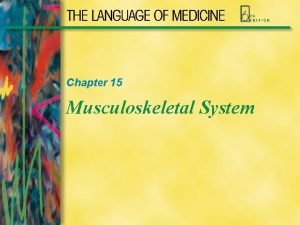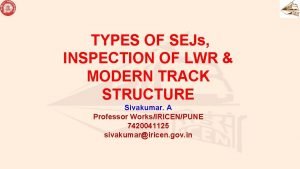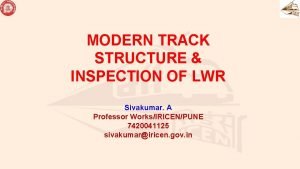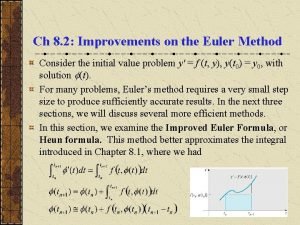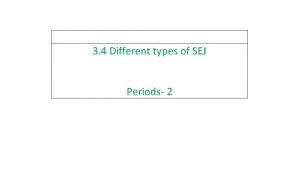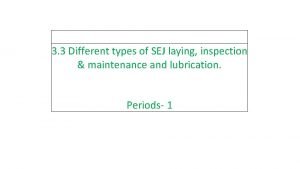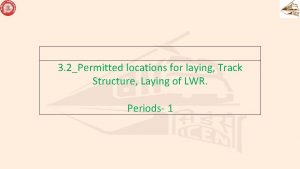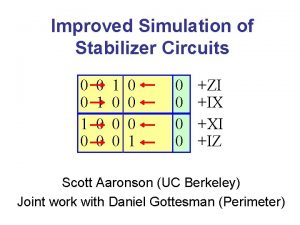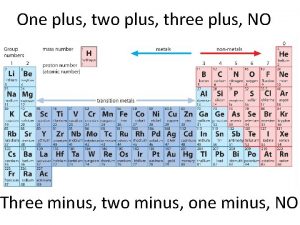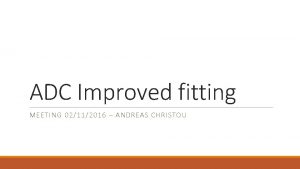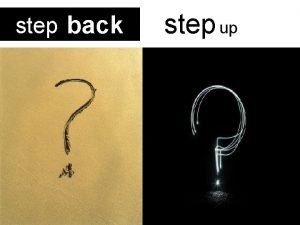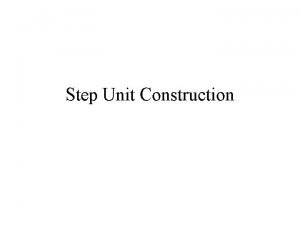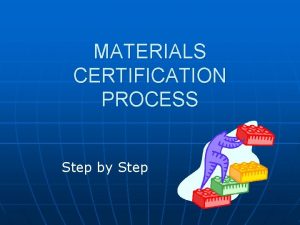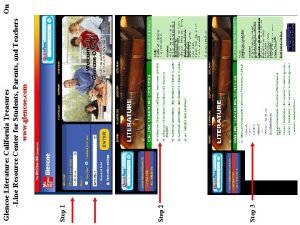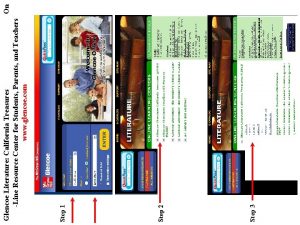The new improved Step Plus System Step Plus









































![Ballot example #1 A Description: Dr. [name] is under review for a merit [or Ballot example #1 A Description: Dr. [name] is under review for a merit [or](https://slidetodoc.com/presentation_image/1384950a27cb20e3c6423572663862e6/image-42.jpg)
![Ballot example #1 B Description: Dr. [name] is under review for a merit from Ballot example #1 B Description: Dr. [name] is under review for a merit from](https://slidetodoc.com/presentation_image/1384950a27cb20e3c6423572663862e6/image-43.jpg)
![Ballot example #3 Description: Dr. [name] is under review for a merit from Professor, Ballot example #3 Description: Dr. [name] is under review for a merit from Professor,](https://slidetodoc.com/presentation_image/1384950a27cb20e3c6423572663862e6/image-44.jpg)
![Ballot example #4 Description: Dr. [name] is under review for a merit from Professor, Ballot example #4 Description: Dr. [name] is under review for a merit from Professor,](https://slidetodoc.com/presentation_image/1384950a27cb20e3c6423572663862e6/image-45.jpg)














- Slides: 59

The new, improved Step Plus System!

Step Plus requires immediate department discussion and action Step Plus was implemented effective July 1, 2014 for personnel actions in all Senate series: Professor in Residence Professor of Clinical ___ Acting Professor of Law Lecturer with Potential for Security of Employment Senior Lecturer/Lecturer with Security of Employment ALL new (2013 -14) faculty hires are within Step Plus

Roadmap for this meeting Presentation: Step Plus overview (25 minutes) • Step Plus rules and processes • Step Plus standards for accelerated advancement • The three-year transition period Q & A, discussion (15 minutes) Presentation: Peer evaluation and voting (20 minutes) • Unequal histories of advancement at UC Davis • Implicit bias: what is known • Patterns in advancement at UC Davis • Rating academic performance as an option when voting Group analysis of alternative voting ballots (25 minutes) Wrap-up (5 minutes)

Why have we done this ? ? ? Academic Senate Task Force on Simplifying the Academic Personnel Process (STAPP), April 23, 2012 “ 1) Step Plus will result in a significant decrease in the number of actions reviewed each year, a clear workload reduction on the part of faculty, staff and administrators. 2) Step Plus provides a greater likelihood that deserving faculty who do not currently put forward their packets for accelerated reviews (because either they are less aggressive or are just too busy) will actually begin to gain the rewards of acceleration. . . 3) Step Plus allows all contributions during a review period to be fully accounted for - whether happening uniformly across the review period or occurring all at once at the end of a period… 4) Step Plus provides a greater likelihood of uniformly equitable decisions, because all packets will cover either a two-year (Assistant and Associate) or three -year (Full) record rather than the current range of years. ”

Merits, Promotions and acceleration • For all merits: accelerations-in-step replace accelerations in time • Merits will no longer be considered prior to normative time at the current step: • Review occurs at two, three- or four- year schedule, as determined by normative time at current rank and step. • Promotions (e. g. to Associate and Full) may occur prior to normative time at step • Every dossier should be considered for acceleration: At every review, the candidate may be advanced more than one step, i. e. 1. 5 steps, 2. 0 steps, etc.

Step Plus temporary salary Supplement • To compensate for salary loss due to eliminating accelerations in time, faculty members receiving an advancement of greater than one step will also receive a temporary salary supplement for normative years at step. • E. g. Prof 1 Prof 2. 5 • Supplement = 0. 25*(salary for P 2 – salary for P 1) • The supplement will end after normative time at the new step. • Academic Affairs has built salary supplement tables, and is instructing AP staff across UC Davis

Key Features of Step Plus (1 of 3) 1. Advancement of only 0. 5 step is not an option. 2. Advancements of >2. 0 steps are permitted in Step Plus, although they are expected to be extremely rare. 3. New appointments will only be allowed at full steps. 4. Sabbatical and professional leaves count toward the normative time for advancement. Leaves without pay (LWOP) also count toward normative time, unless excluded from on-the-clock time based on our campus work-life policies. 5. Candidates may request a Career Equity Review (CER) coincident with a merit/promotion (and limited by other conditions imposed by CAP).

Key Features of Step Plus (2 of 3) 6. As in our prior system, following a denial, deferral, or a 5 -year review without advancement, faculty at all ranks are allowed to come up as early as the following year. 7. As in our prior system, faculty must be reviewed at least every five years. 8. The home department reviews, votes on, and summarizes the merit case, subject to Bylaw 55 and Academic Personnel Manual (APM). • The department letter should recommend a specific action. • Minimally, department peers vote on the recommended action. • Departments are encouraged to provide additional evaluation by peers.

Key Features of Step Plus (3 of 3) 9. Advancement requests of less than 2. 0 steps are normally redelegated, unless the recommendation is a promotion or crosses a barrier step (Professor Step 6 or Professor Above Scale) • Recommendations for > 2. 0 steps go to CAP for review and the central administration for decision. 10. First actions since appointment or promotion may go directly to the Dean for decision. 11. The Academic Senate will monitor the Step Plus system during its first several years to evaluate impacts on faculty progress, the possible need for a 0. 5 step advancement option, and any unanticipated consequences of the new system.

The 3 -year transition period: 2014 -15, 2015 -16, and 2016 -17 • Academic appointees hired prior to 2013 -14 have the option to request a merit that is an “acceleration in time” under the previous rules for their first action during the first three years of the Step Plus System. • • This option will be financially advantageous for relatively few faculty members, mostly those very close to retirement A faculty member may not: • pursue a merit in 2014 -2015 followed by an “acceleration in time” in 2015 -2016 or 2016 -2017, or • be considered for an “acceleration in time” that is evaluated under the Step Plus Criteria for Advancement.

The 3 -year transition period: 2014 -15, 2015 -16, and 2016 -17 • A faculty member may request an “acceleration in time” from one whole step to another whole step (no half-steps). • If the faculty member pursues and receives an “acceleration in time” that skips a whole step (i. e. , from Professor 2 to Professor 4), s/he is not eligible for the Step Plus supplement that would have been received if s/he had received the same advancement after waiting for normative time.

Step Plus Guidelines for Advancement (Professor series: 1 of 5) • One-Step Advancement All members of the Academic Senate are eligible for regular advancement at scheduled intervals. A balanced record, appropriate for rank and step, with evidence of good accomplishments in all areas of review is rewarded with normal advancement. All Academic Senate faculty can expect to advance at normal rates, unless a major flaw in their performance is evident. Service duties are expected to increase as faculty advance in rank and step. This basic standard applies to all Senate series

Step Plus Guidelines for Advancement (Professor series: 2 of 5) • 1. 5 - Step Advancement A larger-than-normal, 1. 5 -step advancement requires a strong record with outstanding achievement in at least one area of review across research or creative work, teaching, and service. However, outstanding achievement in one area may not qualify the candidate for 1. 5 step advancement if performance in another area does not meet UC Davis standards.

• Step Plus Guidelines for Advancement (Professor series: 3 of 5) Two-Step Advancement A two-step advancement will require a strong record in all three areas of review, with outstanding performance in at least two areas. In most cases, one of those areas will be scholarly and creative activity, however, exceptional performance in two other areas (teaching, University and public service, professional competence and activities) might warrant such unusual advancement. The two-step advancement should be considered for individuals who would have accelerated every year under the previous system to avoid disadvantage over progress under the step-plus system. ! !

Step Plus Guidelines for Advancement (Professor series: 4 of 5) Advancements Beyond Two Steps • • These advancements will require an exceptionally strong and balanced record, highlighted by extraordinary levels of achievement in two areas (including research and creative activity), and excellent contributions in the third area. An advancement beyond 2. 0 steps is expected to be extremely rare, and will go to CAP for review and the Vice Provost- Academic Affairs for decision, if proposed. ! !

Step Plus Guidelines for Advancement (Professor series: 5 of 5) Larger-than-normal Above Scale Increments • • The criteria for merit increases are steep at this high rank. Advancements of 1. 5 steps require an exceptionally strong record of excellence in all three areas of review, with exceptional achievement in research and creative work, and outstanding performance in at least one additional area of review. All actions at Above Scale will go to CAP for review and the Vice Provost – Academic Affairs for decision. ! !

• Step Plus Toolkit is available at: http: //academicaffairs. ocp. ucdavis. edu/policies/stepplus/index. html • Toolkit includes: • All of the information we covered today • Step Plus System – Salary Tables • Instructions for documenting Step Plus actions in My. Info. Vault (MIV), Academic Personnel History and Information Database (APHID), and PPS • Instructions for calculating the Step Plus Supplement • Sample Ballots • Frequently Asked Questions • Historical documentation • Guide for promotions and how to use overlapping steps • Guide for Above Scale merits in the Step Plus System

Questions / Discussion

Roadmap for this meeting Presentation: Step Plus overview (25 minutes) • Step Plus rules and processes • Step Plus standards for accelerated advancement • The three-year transition period Q & A, discussion (15 minutes) Presentation: Peer evaluation and voting (25 minutes) • Unequal histories of advancement at UC Davis • Implicit bias: what is known • Patterns in advancement at UC Davis • Rating academic performance as an option when voting Group analysis of alternative voting ballots (20 minutes) Wrap-up (5 minutes)

A little UC Davis history 2014 data analysis by AVP-FEI Phil Kass Since 1991, rates of promotion and merit advancement at UC Davis have been shown to vary significantly • between men and women • among racial/ethnic groups (especially for women) • among colleges and schools • between faculty (both men and women) who have or have not used FMLA family leave or stopped the tenure clock

UC Davis: promotion to tenure by gender Men promote to tenure 33% faster than women: P = 0. 001 Slower rates to tenure are most dramatic for URM women

UC Davis: promotion from Associate to Full by gender Men promote to Full rank 46% faster than women: P < 0. 001 URM faculty promote to Full rank 41% slower than whites: P = 0. 001

UC Davis: gender differences in accelerations reflect gendered differences in self-promotion 2008 -13 data from UC Davis ADVANCE: Women are 36% less likely to seek accelerated tenure than men (25. 5% vs. 39. 7 % of dossiers put up for acceleration), but overall are as likely as men to succeed when they seek acceleration. In STEM, women are 29% less likely to pursue accelerated tenure, but are more likely to succeed when they do

A family tragedy

Abundant research on implicit bias shows consistent, irrefutable patterns Gender: Both men and women view men as more competent and professional, and women as more caring and family-focused. • Regardless of the data, “female” applicants for academic or elite positions are typically down-graded and under-valued. • However, women who demonstrate male-associated traits are often seen as too aggressive. Race: Both whites and African Americans view whites more favorably than blacks in professional contexts. Regardless of the data, applicants with “black” names or known to be black are downgraded professionally. Family status: Given the same data, applicants perceived as “mothers” are seen as less competent, professional and committed. Men perceived as “fathers” get a slight evaluative “bonus”.

… a recent example: Hericanes vs. Himecanes Proceedings of the National Academy of Sciences, June 2014

Implicit biases are also called “mind bugs” • They are ubiquitous and pervasive. • They increase maximum processing speed, and so have probably been adaptive through human evolution.







Take-home lessons about perceptual and implicit biases l l Feeling confident ≠ being accurate: ¡ The way we perceive, judge, remember is often full of errors ¡ Perceptual biases are an ordinary by-product of normal mental processes What we already know affects what we perceive ¡ preconceived expectations influence current judgments ¡ Reliance on preconceived expectations can be efficient, but implicit biases about groups of people result in unintended discrimination

Best practices to reduce the impacts of implicit bias ¡ Recognize that implicit biases pose a potential problem l Raise awareness of patterns of implicit bias l Learn to recognize and call out biases when apparent ¡ Create and use more specific, structured evaluation criteria l. When recruiting, identify, prioritize and use specific criteria for evaluation of applicants l. When voting on merits or promotions, consider rating a faculty candidate’s performance in critical academic spheres

How we vote now… Step Plus assessments imply ratings in multiple performance categories !

Rationale for more evaluative voting ¡ Under Step Plus, every dossier will be considered for multiple potential actions ¡ The availability of half-step intervals allows for more nuanced decisions and can benefit from more detailed information on performance in specific areas ¡ Departments, which often have the deepest knowledge of the candidate and discipline, can explicitly define their priorities and expectations for performance. ¡ Voting “no” on a peer’s advancement can be hard. Rating performance in specific areas may result in more candid assessment (and less bias).

Example: a basic 5 -level performance rating 1: Does not meet expectations 2: Somewhat 3: Meets less than expectations expected for 1. 0 step 4: Somewhat 5: Greatly more than exceeds expected expectations Research Classroom Teaching Mentoring Service *Encourage comments on contributions to diversity in these areas.

How we can make Step Plus a fairer system • Educate ourselves about bias patterns and historical inequities • Develop and score specific performance criteria in evaluating colleagues for merits and promotions • Enhance the quality of evaluation at the department level, where knowledge is often greatest • Ensure that every dossier is considered for potential acceleration • Minimize the impact of variation among candidates with respect to: • appetite for self-promotion • willingness to risk denial

Careful ballot design can make a difference

Ballot Review Exercise IMPORTANT!!! • The following four slides are provided for exercise purposes only, not as samples for use by the department. • Have participants discuss the strengths and weaknesses of each ballot given what you have learned about implicit biases • The first three ballots all have significant deficiencies • Strong sample ballots may be found in the Academic Affairs Step Plus Toolkit at http: //academicaffairs. ucdavis. edu/policies/stepplus/suggestions-departmental-voting. html
![Ballot example 1 A Description Dr name is under review for a merit or Ballot example #1 A Description: Dr. [name] is under review for a merit [or](https://slidetodoc.com/presentation_image/1384950a27cb20e3c6423572663862e6/image-42.jpg)
Ballot example #1 A Description: Dr. [name] is under review for a merit [or accelerated merit] from Professor, Step X to Professor, Step Z, effective XX/XX/20 XX. The review period for this merit is XX/XX/20 XX – XX/XX/20 XX. (1) Do you support a 1. 0 step merit advancement from Professor, Step X to Professor, Step Y? YES, I vote in favor of this action. NO, I oppose this action. (Please provide comment below on reason for a “No” vote. ) ABSTAIN Comment on overall evaluation: (2) Do you support the merit advancement proposed by the candidate from Professor, Step X, to Professor, Step Z? [THIS QUESTION IS TO BE INCLUDED ONLY IF THE CANDIDATE SEEKS A MERIT GREATER THAN 1. 0 STEP] YES, I vote in favor of this action. NO, I oppose this action. (Please provide comment below on reason for “No” vote. ) ABSTAIN Comment on overall evaluation:
![Ballot example 1 B Description Dr name is under review for a merit from Ballot example #1 B Description: Dr. [name] is under review for a merit from](https://slidetodoc.com/presentation_image/1384950a27cb20e3c6423572663862e6/image-43.jpg)
Ballot example #1 B Description: Dr. [name] is under review for a merit from Professor, Step X , effective XX/XX/20 XX. The review period for this merit is XX/XX/20 XX – XX/XX/20 XX. (1) Do you support, at the minimum, a one-step merit advancement? YES, I vote in favor of this action. NO, I oppose this action. ( A comment (see below) is required for voting “No” on a regular merit. ) ABSTAIN Comment on overall evaluation: (2) Do you support a merit advancement of greater than one step? Please select only one option below. YES, I vote in favor of a 1. 5 step merit advancement. YES, I vote in favor of a 2. 0 step merit advancement. NO, I do not support advancement of greater than one step. ABSTAIN Comment on overall evaluation:
![Ballot example 3 Description Dr name is under review for a merit from Professor Ballot example #3 Description: Dr. [name] is under review for a merit from Professor,](https://slidetodoc.com/presentation_image/1384950a27cb20e3c6423572663862e6/image-44.jpg)
Ballot example #3 Description: Dr. [name] is under review for a merit from Professor, Step X , effective XX/XX/20 XX. The review period for this merit is XX/XX/20 XX – XX/XX/20 XX. (1) Do you support a merit from Professor, Step X to Professor, Step X+1. 0? YES, I vote in favor of this action (regular merit advancement). NO, I do not support the proposed action. (Please provide comment below on reason for “No” vote. ) ABSTAIN Comment on evaluation for regular, 1. 0 -step merit: (2) Do you support a merit from Professor, Step X to Professor, Step X+1. 5? YES, I vote in favor of this action (acceleration equivalent to one-half step). NO, I do not support the proposed action. (Please provide comment below on reason for “No” vote. ) ABSTAIN Comment on evaluation for accelerated 1. 5 -step merit: (3) Do you support a merit from Professor, Step X to Professor, Step X+2. 0? YES, I vote in favor of this action (acceleration equivalent to one full step). NO, I do not support the proposed action. (Please provide comment below on reason for “No” vote. ) ABSTAIN
![Ballot example 4 Description Dr name is under review for a merit from Professor Ballot example #4 Description: Dr. [name] is under review for a merit from Professor,](https://slidetodoc.com/presentation_image/1384950a27cb20e3c6423572663862e6/image-45.jpg)
Ballot example #4 Description: Dr. [name] is under review for a merit from Professor, Step X , effective XX/XX/20 XX. The review period for this merit is XX/XX/20 XX – XX/XX/20 XX. Which of the following options do you feel is most appropriate for a merit from Professor, Step X, to be effective XX/XX/20 XX? Please choose one of the following options only. Note: a vote for a higher step acceleration implies support for all lesser advancements. ) I vote in favor of a 2. 0 step increase (acceleration of one full step). I vote in favor of a 1. 5 step increase (acceleration of one-half step). I vote in favor of a 1. 0 step increase (regular merit advancement). I do not support merit advancement. (Please provide comment below on reason for “No” vote) ABSTAIN Comment on selection:

Deciding on a voting method • Voting method is each department’s choice, but should be documented, consistent with Bylaw 55, and may be reviewed by CAP • Use the same voting method for all Step Plus candidates throughout 2014 -15 merit cycle • Department letter makes a recommendation; vote must indicate support for that action • Role of unconscious bias can reduced by the use of specific evaluation criteria • Greater opportunity for negotiation can lead to greater inequities associated with gender, race/ethnicity, disability, family status, etc.

Discussion

The following slides were not presented, but offer examples of a few studies demonstrating bias based on gender, race and family status. For more information and resources, refer to the UC Davis ADVANCE STEAD website: http: //academicaffairs. ucdavis. edu/training-anddevelopment/stead/index. html

Authors reviewed the 1995 Swedish Medical Research Council postdoctoral fellowship selection • Obtained reviews through Freedom of the Press Act • Applicants: 62 men, 52 women • Awardees: 16 men, 4 women • Women were graded below men in all 3 categories of scientific achievement • 10% lower in scientific competence • 7% lower for proposed methodology • 5% lower for proposal relevance

Does the lower evaluation for women reflect lesser competence and productivity than their male colleagues? Competence/impact metrics were assessed for all applicants: • Number of publications (total, first-authored) • Summed journal impact factors (total, first-authored) • Number of citations (total, first-authored) • Other factors included in regression model: gender, nationality, discipline, post-doc abroad, evaluation committee… affiliation with member of the evaluation committee)

“… a female applicant had to be 2. 5 times more productive than the average male applicant to receive the same competence score as he…” Regression analysis: the positive impacts of being male and of being affiliated with a member of the review committee exceeded the influence of measures of scientific impact and productivity by 52% – 220%

2012 PNAS study: N = 127 professors in biology, physics, or chemistry Identical applications for a lab manager position from “male” versus “female” applicants Male and female faculty evaluators did not differ in degree of bias! Plus, “male” applicants were offered ~$3500/year more in salary

• Prior to 1970, only 5% of the musicians within premier US orchestras were women. • Beginning in the 1970’s and 80’s, many orchestras gradually introduced screens separating auditioning musicians from evaluators • In this study, Goldin and Rouse analyzed data from over 1000 auditions– did the use of the screen improve success of women?


Gender bias in letters of reference Trix & Psenka (2003) Discourse & Society • Content analysis of 312 real letters of recommendation that helped medical school faculty attain their positions at large U. S. medical schools from 1992 to 1995. • Compared with letters of recommendation for males, letters for females were : • shorter • more likely to lack specificity • more likely to contain gender terms • • e. g. , "she is an intelligent young lady" more likely to include "doubt raisers" • e. g. , criticisms, hedges, faint praise

Women from underrepresented groups often experience a “double bind” • Disproportionate scrutiny from students, peers and administrators • Assumptions that success was obtained through affirmative action • Heavier burden of informal mentoring and community engagement • Weaker professional support systems

The motherhood penalty Correll et al. (2007) American Journal of Sociology ¡ ¡ Participants rated fictitious job applicants by reading constructed resumes Resumes were statistically matched, except for one listed activity: l Parent-Teacher Association Coordinator (code for “parent”) l Fundraiser for neighborhood association Applicants were rated for competency, commitment and likely starting salary Female applicants perceived as mothers were judged significantly less competent and committed, worthy of 7% less starting salary, and were held to more stringent hiring standards (e. g. higher test scores).

Racial bias in resume evaluation ¡ Bertrand & Mullainathan (2003) American Economic Review ¡ Created ficticious resumes that were assigned to either traditionally black names (e. g. , Lakisha) or traditionally white names (e. g. , Greg). Resumes were submitted to Help-wanted ads in Boston and Chicago newspapers. ¡ Resumes with white names had a 50% greater chance of receiving a call-back than did resumes with black names. High-quality resumes elicited 30% more callbacks for white names, but only 9% more call-backs for black names.

Racial bias in grant proposal evaluation Ginther et al. (2011) Science Analyzed the association between a U. S. National Institutes of Health (NIH) R 01 applicant’s self-identified race or ethnicity and the probability of receiving an award. After controlling for the applicant’s educational background, country of origin, training, previous research awards, publication record, and employer characteristics, African-American applicants are much less likely than whites to be awarded NIH research funding.
 Step 1 step 2 step 3 step 4
Step 1 step 2 step 3 step 4 Knuckle like process at the end of a bone
Knuckle like process at the end of a bone Hát kết hợp bộ gõ cơ thể
Hát kết hợp bộ gõ cơ thể Bổ thể
Bổ thể Tỉ lệ cơ thể trẻ em
Tỉ lệ cơ thể trẻ em Gấu đi như thế nào
Gấu đi như thế nào Glasgow thang điểm
Glasgow thang điểm Chúa yêu trần thế alleluia
Chúa yêu trần thế alleluia Môn thể thao bắt đầu bằng từ chạy
Môn thể thao bắt đầu bằng từ chạy Thế nào là hệ số cao nhất
Thế nào là hệ số cao nhất Các châu lục và đại dương trên thế giới
Các châu lục và đại dương trên thế giới Công thức tiính động năng
Công thức tiính động năng Trời xanh đây là của chúng ta thể thơ
Trời xanh đây là của chúng ta thể thơ Mật thư tọa độ 5x5
Mật thư tọa độ 5x5 101012 bằng
101012 bằng độ dài liên kết
độ dài liên kết Các châu lục và đại dương trên thế giới
Các châu lục và đại dương trên thế giới Thể thơ truyền thống
Thể thơ truyền thống Quá trình desamine hóa có thể tạo ra
Quá trình desamine hóa có thể tạo ra Một số thể thơ truyền thống
Một số thể thơ truyền thống Cái miệng bé xinh thế chỉ nói điều hay thôi
Cái miệng bé xinh thế chỉ nói điều hay thôi Vẽ hình chiếu vuông góc của vật thể sau
Vẽ hình chiếu vuông góc của vật thể sau Biện pháp chống mỏi cơ
Biện pháp chống mỏi cơ đặc điểm cơ thể của người tối cổ
đặc điểm cơ thể của người tối cổ Thế nào là giọng cùng tên
Thế nào là giọng cùng tên Vẽ hình chiếu đứng bằng cạnh của vật thể
Vẽ hình chiếu đứng bằng cạnh của vật thể Fecboak
Fecboak Thẻ vin
Thẻ vin đại từ thay thế
đại từ thay thế điện thế nghỉ
điện thế nghỉ Tư thế ngồi viết
Tư thế ngồi viết Diễn thế sinh thái là
Diễn thế sinh thái là Dot
Dot Số nguyên là gì
Số nguyên là gì Tư thế ngồi viết
Tư thế ngồi viết Lời thề hippocrates
Lời thề hippocrates Thiếu nhi thế giới liên hoan
Thiếu nhi thế giới liên hoan ưu thế lai là gì
ưu thế lai là gì Khi nào hổ con có thể sống độc lập
Khi nào hổ con có thể sống độc lập Sự nuôi và dạy con của hươu
Sự nuôi và dạy con của hươu Hệ hô hấp
Hệ hô hấp Từ ngữ thể hiện lòng nhân hậu
Từ ngữ thể hiện lòng nhân hậu Thế nào là mạng điện lắp đặt kiểu nổi
Thế nào là mạng điện lắp đặt kiểu nổi Improved sej drawing 6914
Improved sej drawing 6914 Enhanced howland current source
Enhanced howland current source An improved illumination model for shaded display
An improved illumination model for shaded display Plant breeding for improved food quality
Plant breeding for improved food quality Improved sej drawing 6902
Improved sej drawing 6902 If you cant measure it you can't manage it quote
If you cant measure it you can't manage it quote Coaching for improved performance
Coaching for improved performance Improved euler method
Improved euler method Rahee sej drawing
Rahee sej drawing Sej railway
Sej railway Improved sej drawing 6914
Improved sej drawing 6914 Improved power grid
Improved power grid Improved simulation of stabilizer circuits
Improved simulation of stabilizer circuits Discriminating power of the item
Discriminating power of the item Transistor voltage regulator supplier
Transistor voltage regulator supplier Improved data sharing
Improved data sharing

